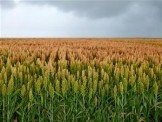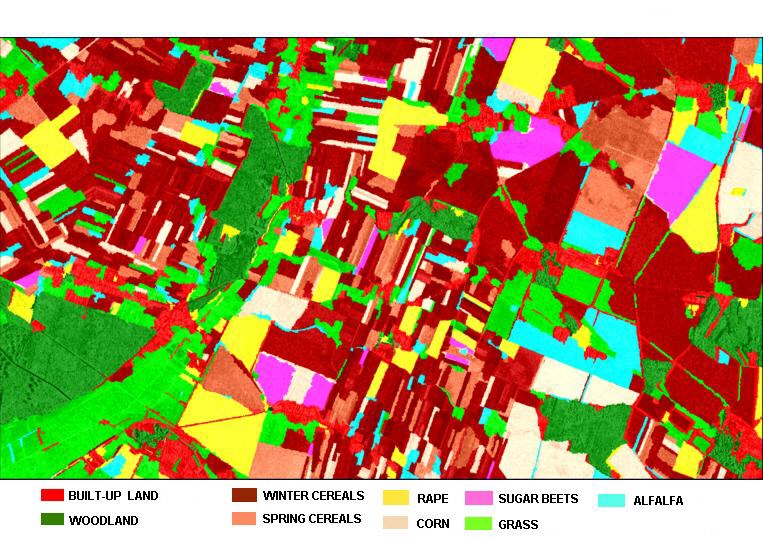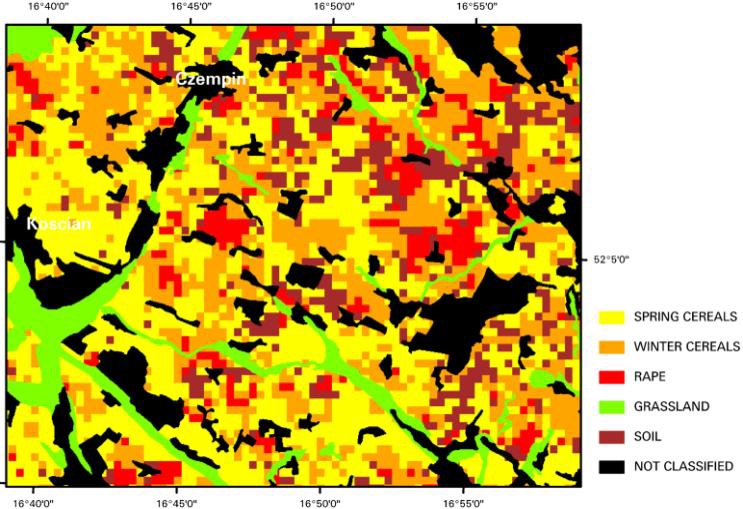ALOS-2 PALSAR-2 for biomass and soil moisture assessment
ALOS2 PALSAR for biomass and soil moisture assessment – study for agriculture, forest and wetlands ecosystem
Duration of the project: January 2014 - January 2017
Principal Investigator: prof. Katarzyna Dabrowska-Zielinska, Remote Sensing Centre IGiK
email: katarzyna.dabrowska-zielinska@igik.edu.pl, phone: +48 22 3291974
The objectives of the proposal is to develop the method to deliver innovative information on wetlands, forest and crops and their biomass and moisture conditions with high spatial and temporal resolution of ALOS-2 and Sentinel-1 microwave data with different polarization and incidence angle. The optical data from Sentinel-2 will be added and the synergy of information will be designed in order to depict the soil - vegetation features. The vegetation biomass, density, height, soil moisture, vegetation moisture, LAI, APAR, chlorophyll will be measured at the ground during the satellite overpass.
The ground data will be used for:
- examination of the impact of vegetation: type and biomass and soil moisture on backscattering signal of ALOS PALSAR2 single and dual polarization under different incidence angle. The precision of estimating biomass and soil moisture for wetlands, forest and crops at the agriculture area will be calculated.
- implementation of water cloud model (Atema and Ulaby 1978) modified by Prevot 1993 and Champion 1996. The applied model will be based on ALOS-2 PALSAR polarization HV and incident angle 50-60 deg and polarization HH < 20deg incidence angle and the combination of ALOS PALSAR2 and Terra SARX and ALOS PALSAR2 and Sentinel1. The model will be calibrated by vegetation descriptors (LAI characterizing biomass) and soil moisture. Validation and the st error of biomass and soil moisture estimates from both methods will be performed. Monitoring of soil moisture in wetlands will allow finding and establishing the threshold for wetlands conditions as lowering soil moisture causes the threat for wetlands ecosystem.
The often occurrence of drought as the climate change effects the changes of soil moisture and biomass. It is noted the vegetation related feedbacks on atmosphere. Biomass decreases and reduces evapotranspiration and soil moisture. That’s why monitoring the biomass changes will allow to depict the effect of climate change on biomass growth and on crop yield. The obtained biomass and soil moisture values will be the input to further models for prediction of crop yield.
Figure: Land use categories based on TerraSAR-X/ALOS PALSAR (left) and multitemporal ENVISAT.ASAR (right) data. Credits: IGiK



